-
 Bitcoin
Bitcoin $118900
1.66% -
 Ethereum
Ethereum $3735
1.35% -
 XRP
XRP $3.506
0.71% -
 Tether USDt
Tether USDt $1.000
-0.01% -
 BNB
BNB $799.4
5.78% -
 Solana
Solana $202.0
1.87% -
 USDC
USDC $0.9999
0.00% -
 Dogecoin
Dogecoin $0.2661
1.89% -
 Cardano
Cardano $0.8877
1.59% -
 TRON
TRON $0.3173
2.45% -
 Hyperliquid
Hyperliquid $45.00
2.59% -
 Stellar
Stellar $0.4723
3.40% -
 Sui
Sui $3.970
1.32% -
 Chainlink
Chainlink $19.67
1.94% -
 Hedera
Hedera $0.2710
1.99% -
 Avalanche
Avalanche $25.74
-0.01% -
 Bitcoin Cash
Bitcoin Cash $528.1
1.98% -
 Litecoin
Litecoin $120.1
3.57% -
 Shiba Inu
Shiba Inu $0.00001525
1.26% -
 UNUS SED LEO
UNUS SED LEO $8.989
-0.01% -
 Toncoin
Toncoin $3.304
1.74% -
 Polkadot
Polkadot $4.531
3.38% -
 Uniswap
Uniswap $10.74
2.51% -
 Ethena USDe
Ethena USDe $1.001
0.00% -
 Monero
Monero $325.5
2.44% -
 Pepe
Pepe $0.00001413
1.31% -
 Bitget Token
Bitget Token $4.860
0.85% -
 Dai
Dai $0.9999
0.01% -
 Aave
Aave $307.3
-2.07% -
 Bittensor
Bittensor $448.8
2.91%
How do I use conditional orders on Bybit? How do I set the trigger price?
Bybit's conditional orders, including stop, take profit, and trailing stop, allow traders to execute trades based on specific market conditions, enhancing risk management and strategy optimization.
May 17, 2025 at 09:57 am
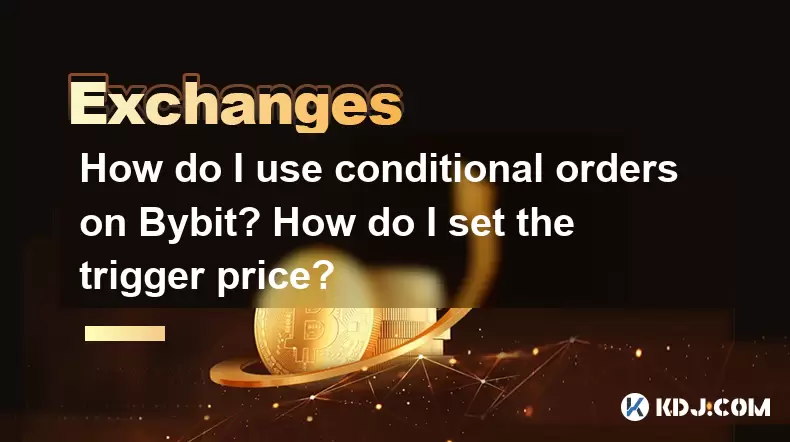
Introduction to Conditional Orders on Bybit
Bybit is a popular cryptocurrency exchange that offers a wide range of trading tools to its users. Among these tools, conditional orders are particularly useful for traders looking to execute trades based on specific market conditions. Conditional orders allow you to set up trades that will only execute when certain predefined criteria are met, such as a specific price level being reached. In this article, we will explore how to use conditional orders on Bybit and how to set the trigger price effectively.
Understanding Conditional Orders
Conditional orders are advanced trading orders that are executed only when certain conditions are met. These conditions can be based on price levels, time, or other market indicators. Bybit offers several types of conditional orders, including stop orders, take profit orders, and trailing stop orders. Each type serves a different purpose and can be used to manage risk and optimize trading strategies.
Types of Conditional Orders on Bybit
Bybit provides various types of conditional orders to cater to different trading needs:
- Stop Order: This order is used to limit losses or to enter the market at a more favorable price. A stop order becomes a market order once the trigger price is reached.
- Take Profit Order: This order is used to lock in profits once the market reaches a certain price level. When the trigger price is hit, the take profit order becomes a market order.
- Trailing Stop Order: This order adjusts the stop price at a fixed percent or dollar amount below or above the market price. It is designed to protect gains by allowing a trade to remain open and continue to profit as long as the price is moving in the trader's favor.
Setting Up a Conditional Order on Bybit
To set up a conditional order on Bybit, follow these detailed steps:
- Log in to Your Bybit Account: Ensure you are logged into your Bybit account and have sufficient funds in your trading wallet.
- Navigate to the Trading Page: Go to the trading page of the cryptocurrency pair you wish to trade.
- Open the Order Form: Click on the "Order" button to open the order form.
- Select Conditional Order: In the order form, select the "Conditional" tab to access the conditional order settings.
- Choose the Type of Conditional Order: Select the type of conditional order you want to use (stop order, take profit order, or trailing stop order).
- Set the Trigger Price: Enter the trigger price at which you want the conditional order to be activated. This is the price level that must be reached for the order to become active.
- Set the Order Price: For stop and take profit orders, you need to set the order price, which is the price at which the order will be executed once triggered.
- Set the Quantity: Enter the quantity of the cryptocurrency you want to trade.
- Review and Submit: Review all the settings carefully, and once satisfied, click the "Submit" button to place the conditional order.
Setting the Trigger Price
Setting the trigger price is a crucial step in using conditional orders effectively. The trigger price determines when your conditional order will become active. Here are some tips for setting the trigger price:
- Market Analysis: Conduct thorough market analysis to identify key support and resistance levels. These levels can serve as potential trigger prices for your conditional orders.
- Risk Management: Consider your risk tolerance and trading strategy when setting the trigger price. For stop orders, the trigger price should be set at a level that limits potential losses, while for take profit orders, it should be set at a level that locks in profits.
- Volatility: Take into account the volatility of the cryptocurrency you are trading. More volatile assets may require wider trigger price ranges to avoid premature triggering of orders.
- Backtesting: Use historical data to backtest different trigger price levels and see how they would have performed in past market conditions. This can help you fine-tune your trigger price settings.
Monitoring and Managing Conditional Orders
Once your conditional orders are set, it's important to monitor and manage them effectively:
- Order Status: Regularly check the status of your conditional orders on the Bybit platform. You can see whether they are active, pending, or have been executed.
- Adjustments: Be prepared to adjust your trigger prices and order quantities based on changing market conditions. Bybit allows you to modify your conditional orders before they are triggered.
- Canceling Orders: If market conditions change significantly, you may need to cancel your conditional orders to avoid unwanted executions. You can cancel orders directly from the Bybit trading interface.
Using Conditional Orders in Different Trading Scenarios
Conditional orders can be used in various trading scenarios to enhance your trading strategy:
- Trend Following: Use conditional orders to enter or exit trades based on trend indicators. For example, set a stop order to enter a long position when the price breaks above a resistance level.
- Breakout Trading: Use conditional orders to capitalize on price breakouts. Set a take profit order to lock in profits when the price breaks out of a consolidation range.
- Risk Management: Use conditional orders to manage risk by setting stop orders to limit potential losses. For example, set a stop order to exit a trade if the price drops below a certain support level.
Frequently Asked Questions
Q1: Can I set multiple conditional orders for the same cryptocurrency pair on Bybit?
Yes, you can set multiple conditional orders for the same cryptocurrency pair on Bybit. This allows you to manage different aspects of your trading strategy simultaneously, such as setting both stop and take profit orders.
Q2: What happens if the market price gaps through my trigger price on Bybit?
If the market price gaps through your trigger price, Bybit will execute your conditional order at the next available price. This is known as a "slippage" and can result in the order being filled at a price different from your specified order price.
Q3: Can I use conditional orders for futures trading on Bybit?
Yes, you can use conditional orders for futures trading on Bybit. The process is similar to setting up conditional orders for spot trading, but you will be trading futures contracts instead of the underlying cryptocurrency.
Q4: Are there any fees associated with using conditional orders on Bybit?
Bybit does not charge additional fees for using conditional orders. However, standard trading fees apply when your conditional order is executed. Be sure to review Bybit's fee structure to understand the costs involved in your trades.
Disclaimer:info@kdj.com
The information provided is not trading advice. kdj.com does not assume any responsibility for any investments made based on the information provided in this article. Cryptocurrencies are highly volatile and it is highly recommended that you invest with caution after thorough research!
If you believe that the content used on this website infringes your copyright, please contact us immediately (info@kdj.com) and we will delete it promptly.
- IREN's Bitcoin Mining Prowess Meets AI: An SOTP Valuation Deep Dive
- 2025-07-23 12:30:12
- Arca, PENDLE, and Kraken: Navigating DeFi's Institutional Currents
- 2025-07-23 11:10:11
- Bitcoin, Bedford, and a Real-Life Batman: Peter McCormack's Crime Crusade
- 2025-07-23 12:30:12
- Bitcoin Betting, Small Investors, and the Specter of Dollar Collapse: A New Yorker's Take
- 2025-07-23 08:50:11
- OpenFundNet, the Web3 Boom, and Flare's Backbone: A Deep Dive
- 2025-07-23 12:50:11
- Altcoins, Binance Futures, and Bitcoin Rotation: Catching the Crypto Wave
- 2025-07-23 09:10:11
Related knowledge
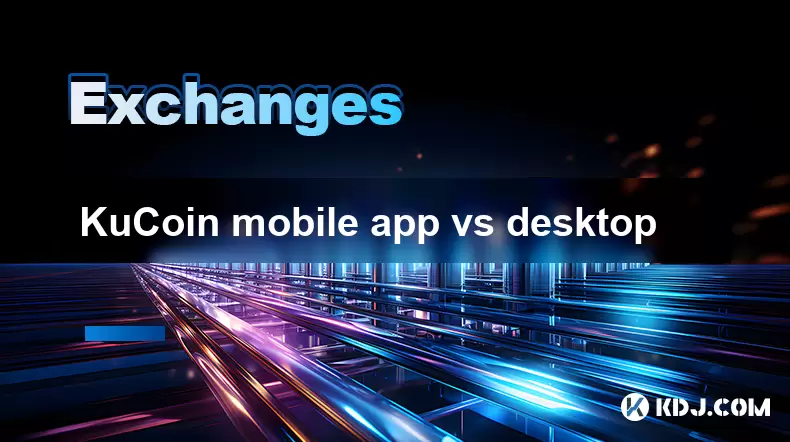
KuCoin mobile app vs desktop
Jul 19,2025 at 08:35am
Overview of KuCoin Mobile App and Desktop PlatformThe KuCoin ecosystem offers both a mobile app and a desktop platform, each designed to cater to diff...
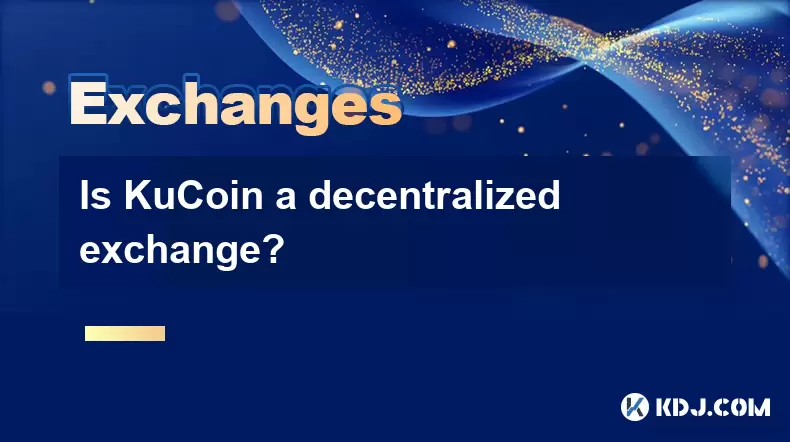
Is KuCoin a decentralized exchange?
Jul 18,2025 at 03:15pm
Understanding Decentralized Exchanges (DEXs)To determine whether KuCoin is a decentralized exchange, it's essential to first understand what defines a...
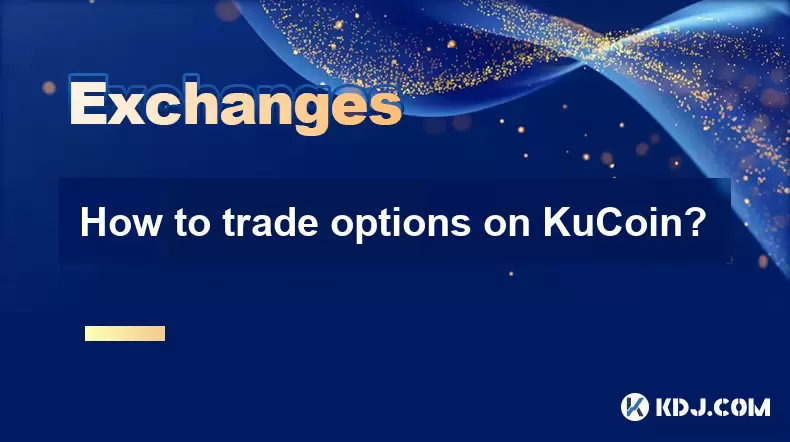
How to trade options on KuCoin?
Jul 19,2025 at 03:42am
Understanding Options Trading on KuCoinOptions trading on KuCoin allows users to speculate on the future price movements of cryptocurrencies without o...
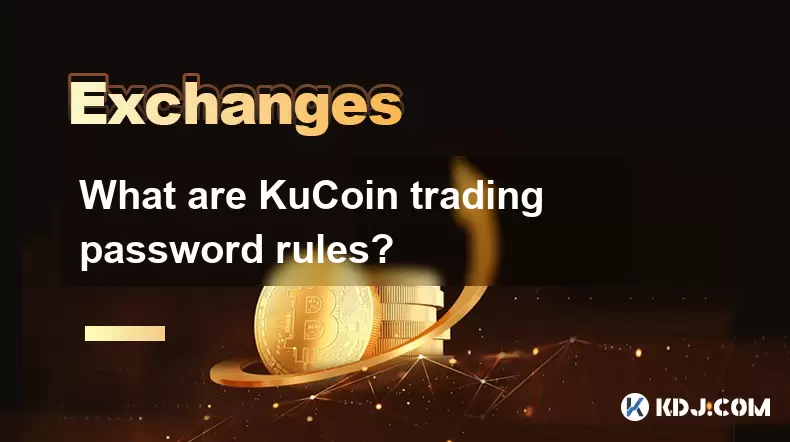
What are KuCoin trading password rules?
Jul 20,2025 at 07:56am
Understanding the Purpose of a Trading Password on KuCoinOn KuCoin, a trading password serves as an additional layer of security beyond the standard l...

Who is the CEO of KuCoin?
Jul 20,2025 at 09:35am
Background of KuCoinKuCoin is one of the largest cryptocurrency exchanges globally, known for its diverse range of trading pairs and user-friendly int...

Where is KuCoin based?
Jul 22,2025 at 10:35pm
Understanding KuCoin's Global PresenceKuCoin is one of the most recognized names in the cryptocurrency exchange market, serving millions of users glob...

KuCoin mobile app vs desktop
Jul 19,2025 at 08:35am
Overview of KuCoin Mobile App and Desktop PlatformThe KuCoin ecosystem offers both a mobile app and a desktop platform, each designed to cater to diff...

Is KuCoin a decentralized exchange?
Jul 18,2025 at 03:15pm
Understanding Decentralized Exchanges (DEXs)To determine whether KuCoin is a decentralized exchange, it's essential to first understand what defines a...

How to trade options on KuCoin?
Jul 19,2025 at 03:42am
Understanding Options Trading on KuCoinOptions trading on KuCoin allows users to speculate on the future price movements of cryptocurrencies without o...

What are KuCoin trading password rules?
Jul 20,2025 at 07:56am
Understanding the Purpose of a Trading Password on KuCoinOn KuCoin, a trading password serves as an additional layer of security beyond the standard l...

Who is the CEO of KuCoin?
Jul 20,2025 at 09:35am
Background of KuCoinKuCoin is one of the largest cryptocurrency exchanges globally, known for its diverse range of trading pairs and user-friendly int...

Where is KuCoin based?
Jul 22,2025 at 10:35pm
Understanding KuCoin's Global PresenceKuCoin is one of the most recognized names in the cryptocurrency exchange market, serving millions of users glob...
See all articles

























































































